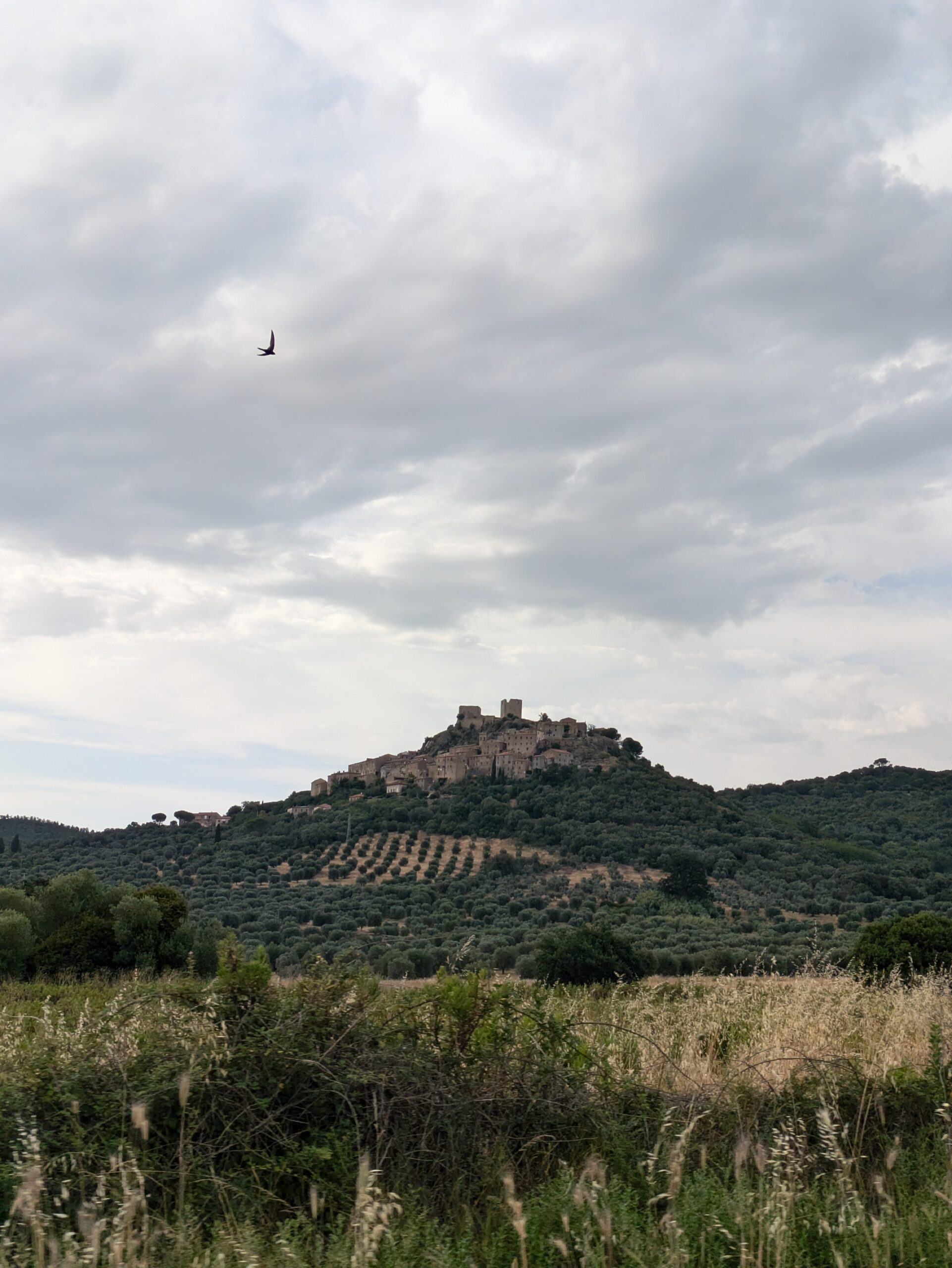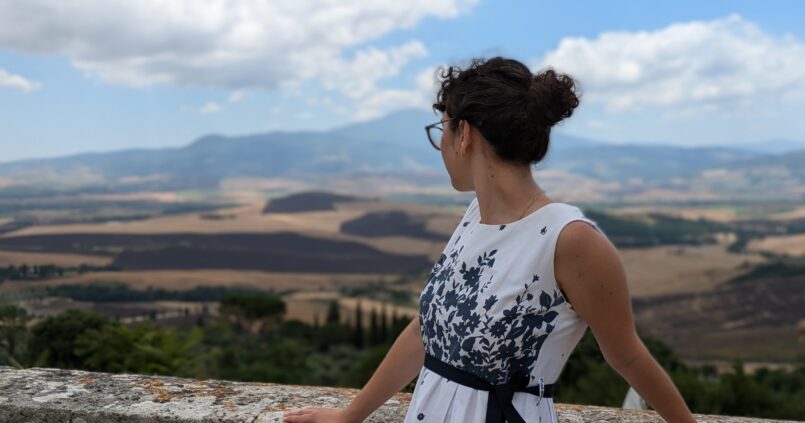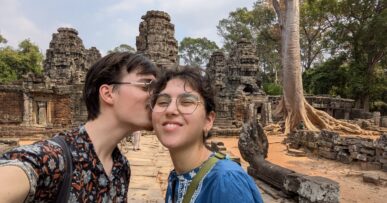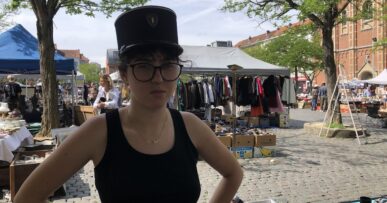The day is hot as the sun warms the golden fields of Tuscany. We enjoy the lack of humidity we suffered in Venice, making the summer here less stuffy and oppressing. Accompanied by The Doors and later Morphine, we drive between endless rolling hills the colour of steaming baked bread just out of the firewood oven, now drying under the baking radiation, interspersed with bright green lines of vineyards and the rather gray plumes of cloudlike olive tree groves, like patterns on some improvised Persian carpet. Dark brown patches of burnt crops or crumbling earth, plowed before the second sowing, complete the warm jumble of summer shades.
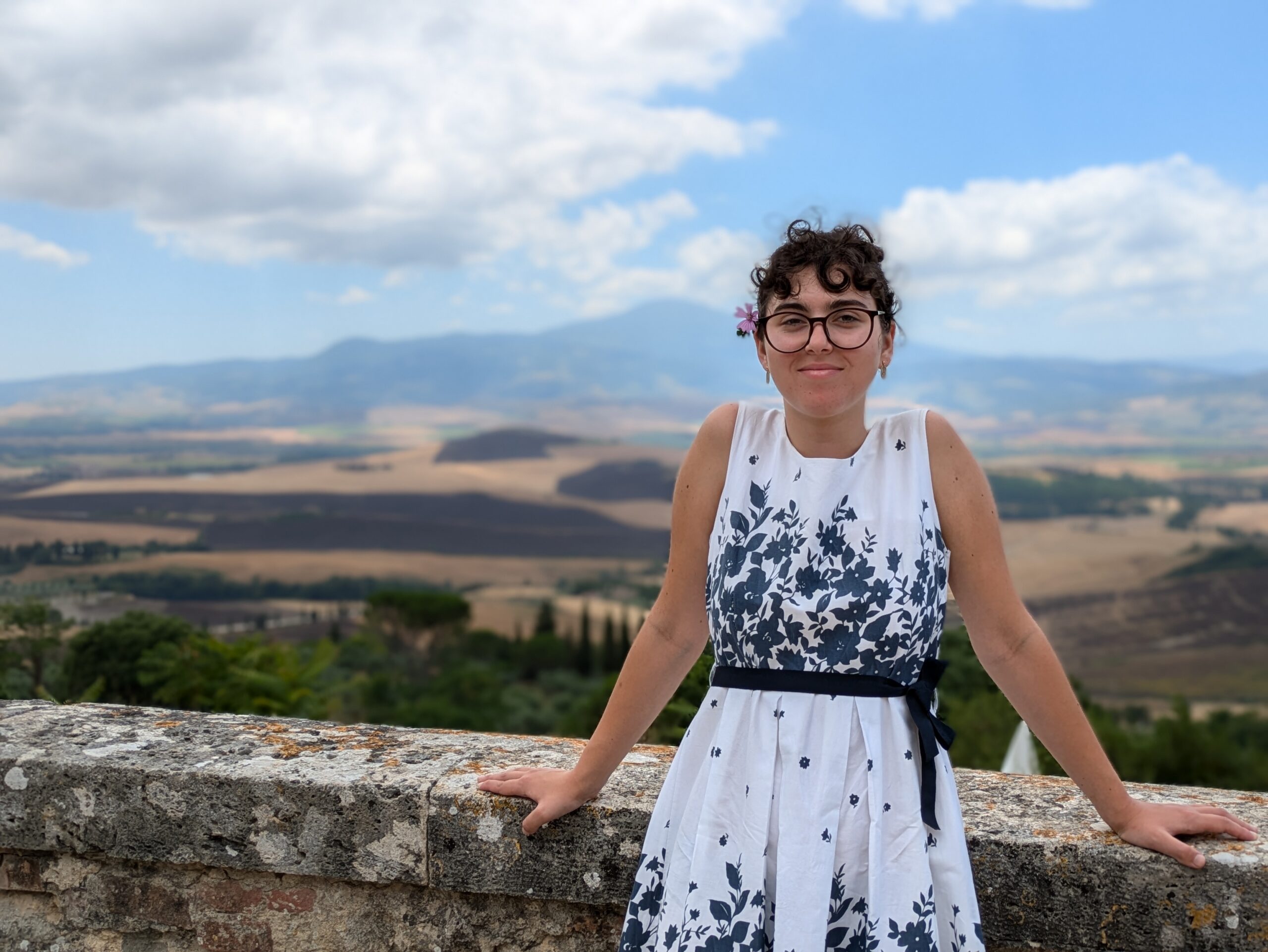
Pienza rests on an inconspicuous hill, rising slightly above its peers at the centre of this dreamlike landscape. Envisaged as the avant-garde dream of a perfect town, Sienese pope Picolomini had ordered it built in the sixteenth century, with the renaissance in full swing. Its sole palace and tiny cathedral reflect the symmetrical lessons and geometric designs of their time, and perhaps the street names betray the wholesome character of the pope, as they range from Calle dell’Amore, to Calle della Fortuna and Calle del Bacio.
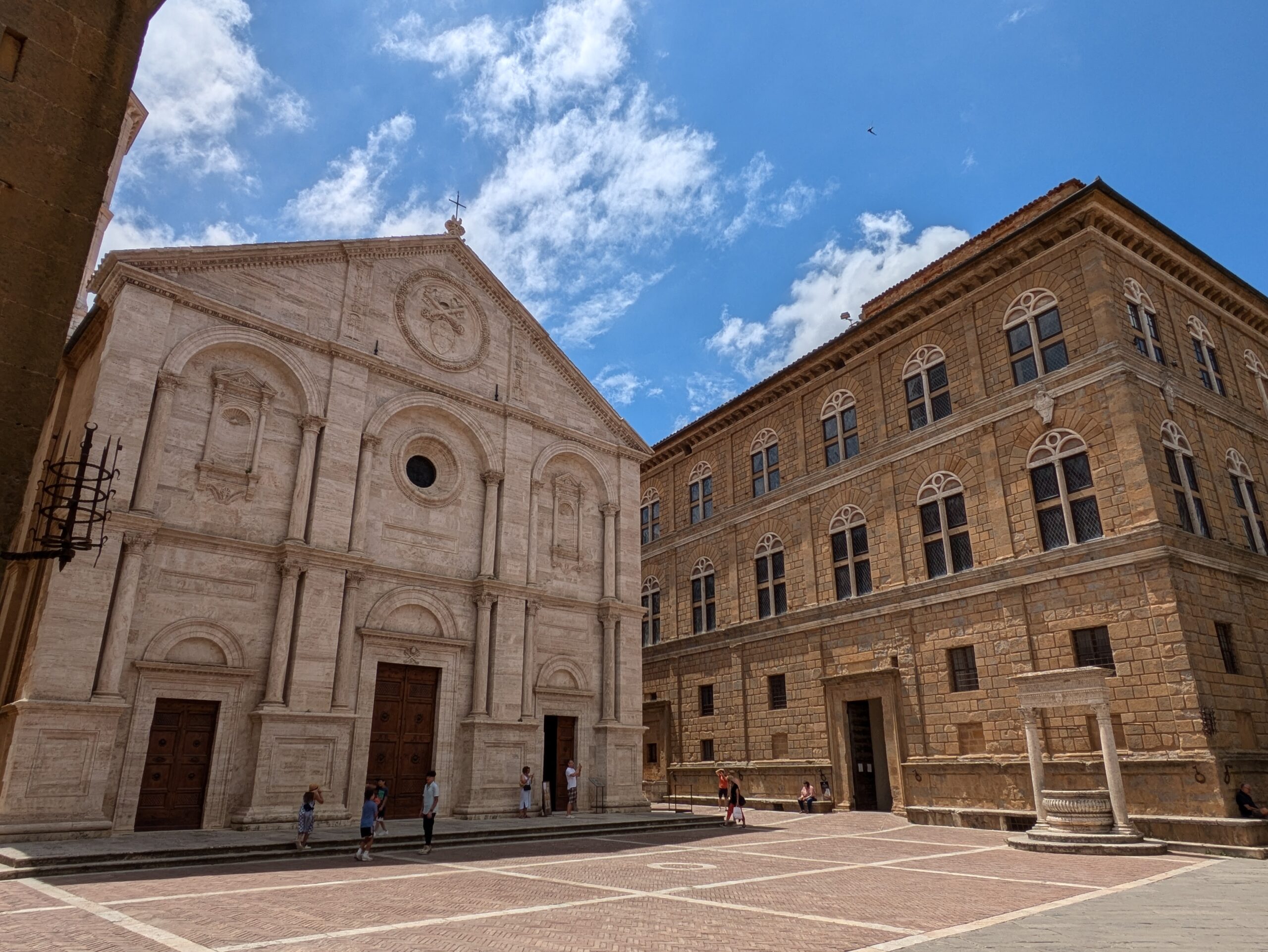
On the road to Montepulciano we make a short stop by the side of a deserted field. In the shade of some tawny tree we prepare our schiacciata with mozzarella and prosciutto, and while we make efforts to finish this copious lunch, Indi looks longingly at the abandoned orange tractor beside us. Jumping up after the final bite, she climbs atop the machine, striking funny poses for the imagined cameras and laughing all the while.
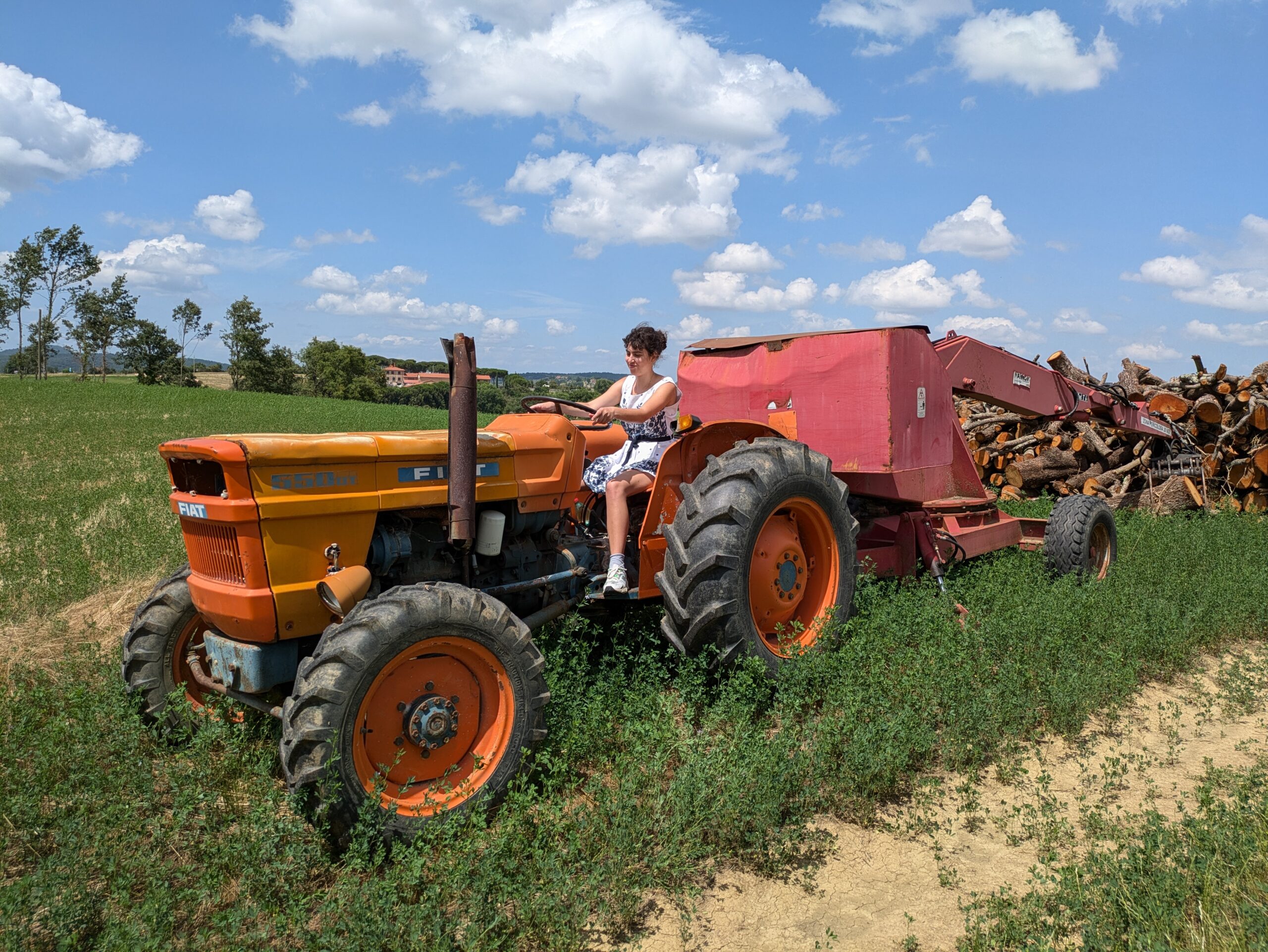
Montepulciano sits atop another of Tuscany’s many hills, still protected by its medieval wall and crenelated towers, merging in some spots with the buildings of later centuries. Its main road crawls upwards like a snake passing through many curves, with every borough proudly displaying its different, brightly coloured flag. Halfway to the top we stop in an old goldsmith’s workshop, where a magnificent piece of intricate golden filigree and painstakingly cut gemstones rests at the centre of an impressive collection of jewelry. Despite us being unable to buy anything, the owner of the shop, daughter of the head craftsman, answers all our questions with a clear passion for the trade and explains that the main piece we admired together is not for sale, but an invaluable heirloom to the family.
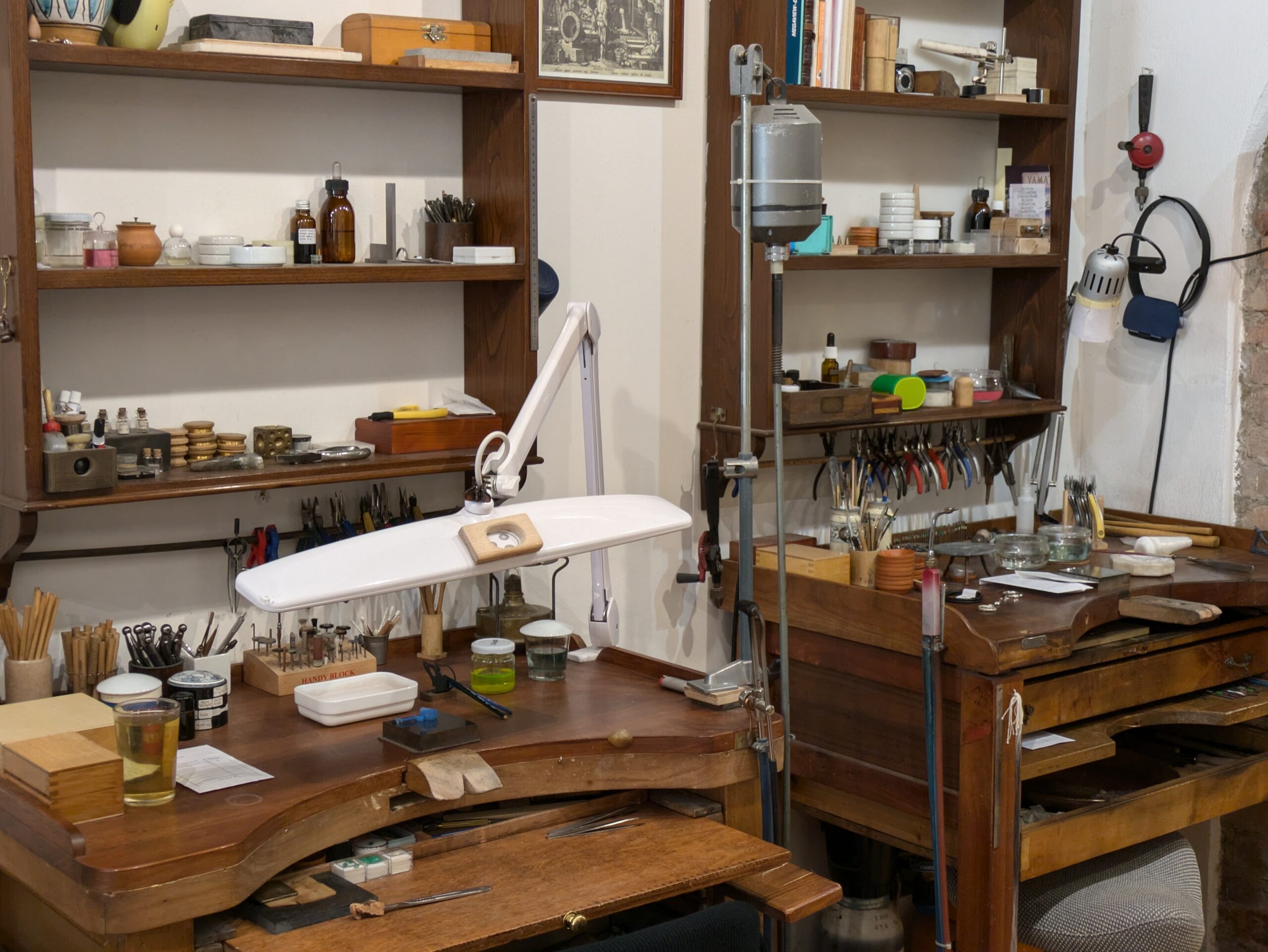
At the summit we find a sun drenched square, surrounded by the bare brick facade of an unfinished church, the castle-like town hall with its sole clock bearing tower, so reminiscent of all other town halls of Italy, and some tourists disappointed in their visit as both are currently closed because of restoration works.
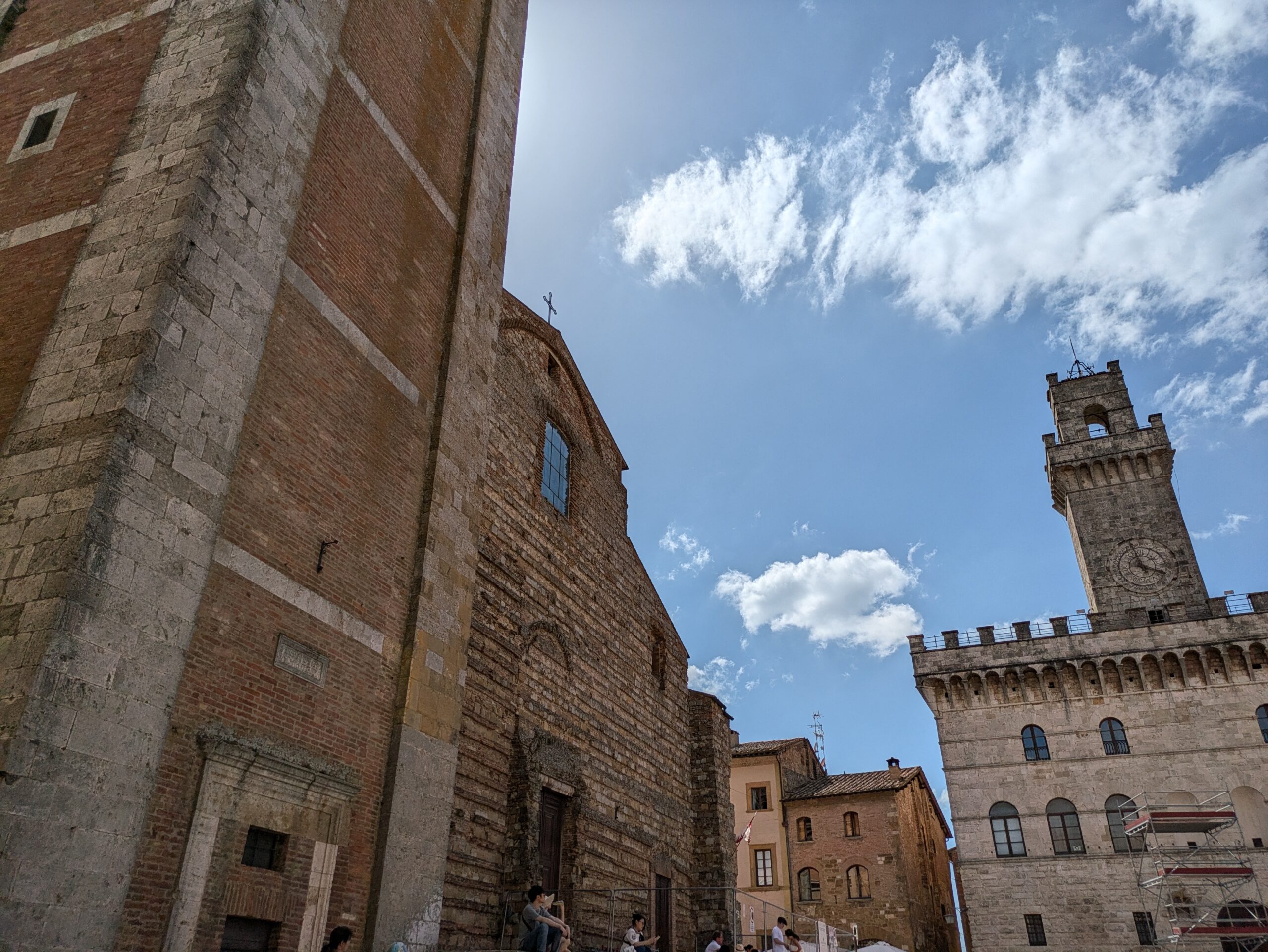
And at some point you will drive by a field overgrown with long dry grasses and white flowers visited by bumble bees and butterflies. You will know that for a thousand years it has been there, unchanged by the worries of the world, and for a thousand more it will remain just so, waiting for the farmer and his plow, or the sheep and their shepherds. A swell of emotion will come over you, at this simple beauty, so undemanding of anything, a place bereft of time, where travelling artists will pause for a rough sketch or a picnic shared with a stranger. You will see and know all this in the blink of an eye, and you might even cry at the beauty of this earth.
